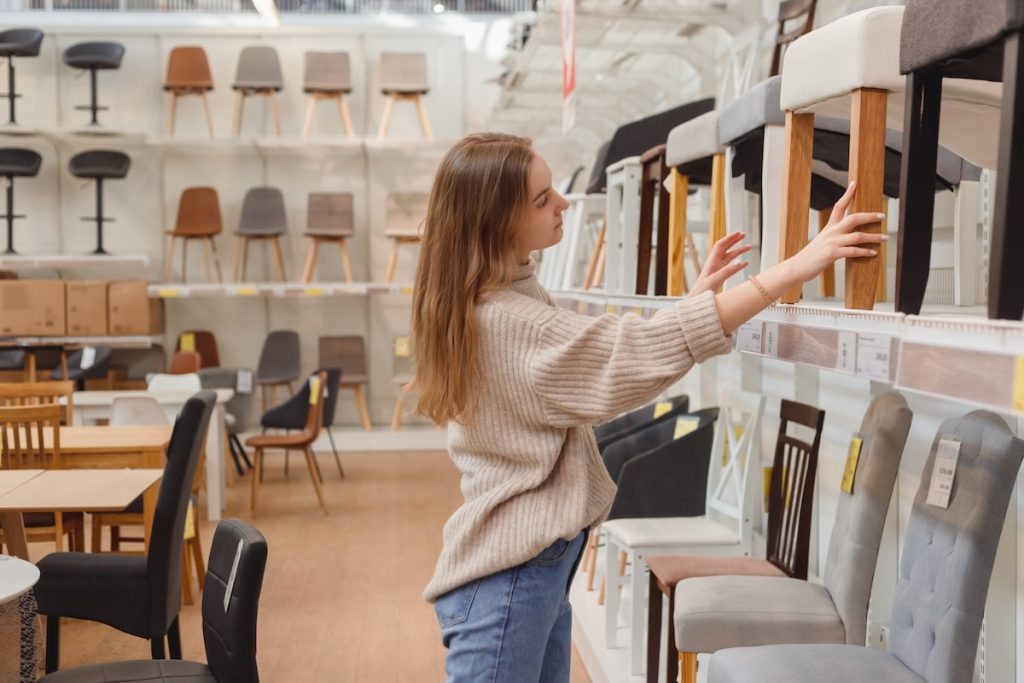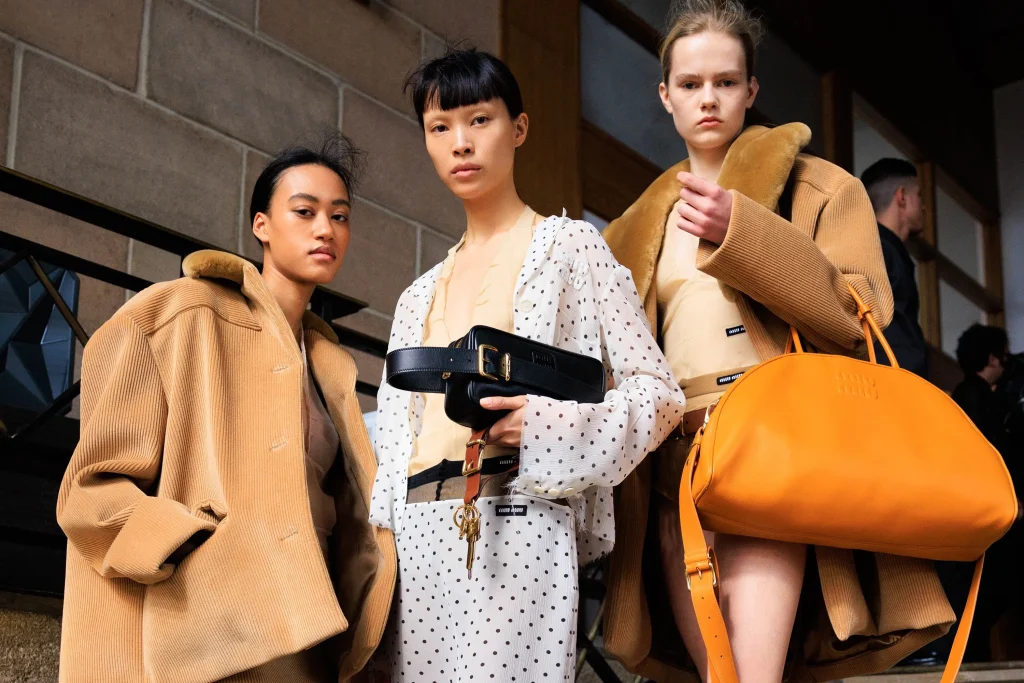In the future, even the most basic marketing material will be a distinct, quantifiable step toward a purchase.
According to Hootsuite, 40% of marketers are now utilizing shoppable media to remove obstacles, block out distractions, and gain more customer information.
You’ve come to the perfect place if you’re trying to incorporate some of that capability into your own work.
What is shoppable media?
Digital material that encourages people to shop is known as shoppable media. Shoppable media promotes choice by giving consumers the knowledge they need to compare purchasing options and obvious routes to each retailer, in contrast to firms that frequently connect advertisements, articles, videos, and other digital assets directly to their product pages.
According to a recent report by Accenture, the $1.2 trillion worldwide social commerce market, currently valued at $492 billion, is predicted to develop at a rate three times faster than that of traditional ecommerce by 2025.
By 2025, it is anticipated that Gen Z and Millennial social media users would account for 62% of global social commerce spending.
A person’s whole shopping experience, from finding products to paying for them, takes place on a social media platform, according to Accenture’s research, “Why Shopping’s Set for a Social Revolution.”
An estimated 64% of social media users surveyed stated they had purchased anything through social commerce in the previous year, which Accenture calculates to be close to 2 billion social purchasers worldwide.
The pandemic demonstrated how much individuals rely on social media sites as the starting point for all of their online activities, including news, entertainment, and communication.
Social media is becoming increasingly important in our daily lives, as seen by the constant increase in time spent on it.
They are changing consumer behavior, opening up new user experiences and income potential for platforms and businesses.
Although the phrase may conjure up images of a native checkout process like Checkout on Instagram, making media shoppable doesn’t actually involve allowing for sales.
Because your viewers may compare prices, stock availability, buying alternatives, and more right from your media, regardless of what kind of media it is, it is “shoppable.”
The customer journey is skipped when brands drive consumers into a single distribution channel, such as their own direct-to-consumer store: comparison.
Consumers will seek elsewhere if you don’t provide them with the information they need to shop, where your competitors may be able to snare them and their tastes might steer them in the wrong direction.
Any marketing content that offers a clear option to buy things is known as shoppable media (also known as shoppable content). This can appear in a variety of ways.
Viewers may occasionally have the option to add products they see in the content to a shopping cart. Sometimes the text will direct readers to a simplified product page.
In either case, adding powerful functionality by making content shoppable benefits both you and your audience. Without searching the internet for the item they just saw, customers can act on their urge to buy right away. In the meanwhile, your company can benefit from a number of benefits.
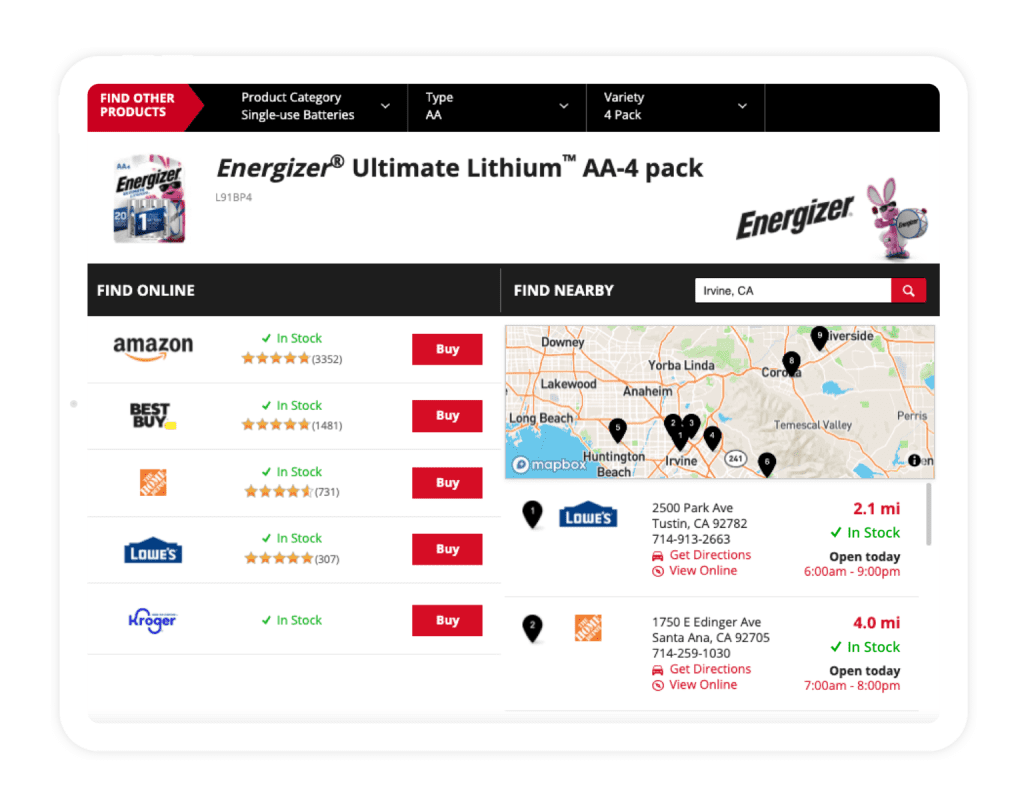
What does shoppable media look like?
Increasing the effectiveness and measurability of your efforts can appear pretty alluring when you consider the meteoric rise in social commerce sales expected in the upcoming years. A brand’s commerce strategy may benefit greatly from using shoppable media.
Consider collaborating with a significant social influencer. It may seem obvious to capitalize on their fan base, but doing so without guaranteeing a strong link to the purchase would be foolish.
Imagine that they utilize their Instagram stories to attract millions of customers to your goods, but instead of hoping they make a purchase using the only route you provide, you employ a shoppable media strategy to incorporate information about the product’s availability in your post.
Once more, shoppable material need not be limited to social platforms. Additionally, businesses can design widgets for their websites to turn their content into shopping malls. They should make certain that these widgets offer purchasing options, prices, ratings, and other pertinent data.
How does shoppable media work?
There are two requirements for shoppable media:
– Simple access to several distribution outlets
– Up-to-date data
Your target audience requires an easy way to weigh possibilities, choose wisely, and pick a retailer.
Even if there are no formatting or logistical concerns, manually typing up all the information and links individuals want could quickly lead to the content being out of date and useless.
A tailored solution that is dynamically updated with data from your merchants could be created.
However, that requires a big upfront investment, and you’ll probably only get a really basic tool in return.
The majority of brands rely on third-party software programmes built by Kilowott. We can build an easy-to-use programme that shows real-time data taken directly from the product pages of your merchants.
This sophisticated software can allow clients to choose their path to purchase when they click your advertising and other material.
You can choose to prioritize your top-performing partners or the brands that people are most acquainted with when it comes to the information your widget displays and the stores that customers see.
Our unique tool browses product pages like a customer would using our exclusive “spidering” technology.
It constantly shows up-to-date product information and is aware of any changes to availability or pricing. Remember, your audience won’t trust you to assist them in their shopping if you can’t give them accurate, up-to-date information.
Give your customers information they can genuinely utilize to select what to buy when you decide to make your media shoppable.
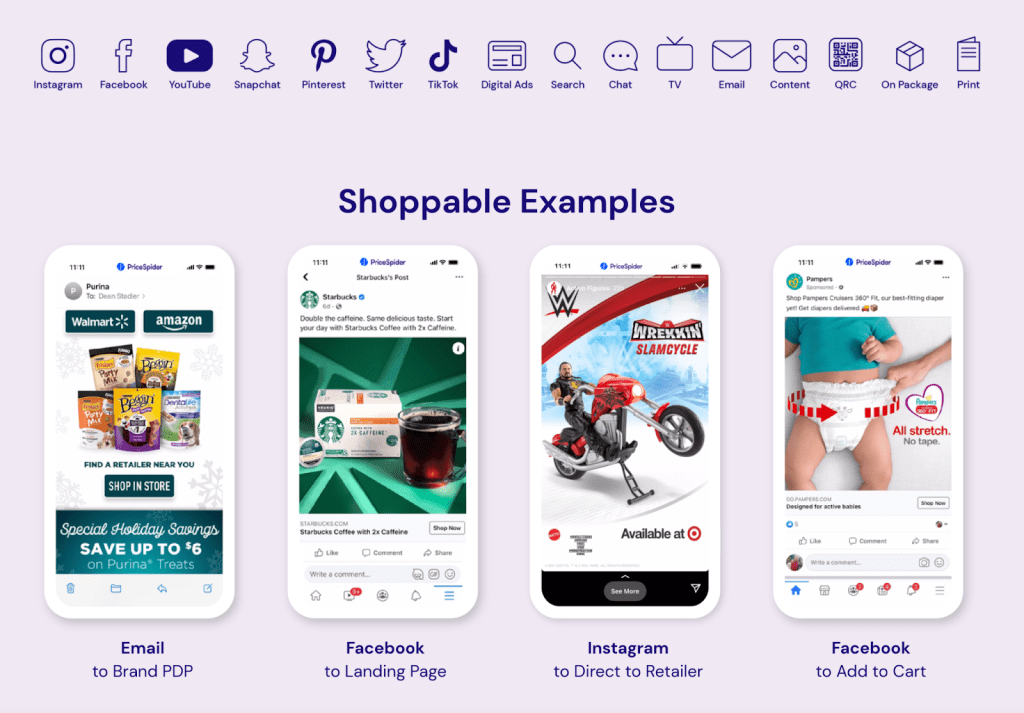
What are the benefits of shoppable content?
By providing your digital marketing material a direct, data-driven function in your sales funnel, shoppable media makes it work harder.
Let’s look at how that works in practise to see how it takes a lot of the guessing out of your marketing
More Compact Sales Funnel
The distance between seeing a product you like and making an online purchase is substantially reduced by shoppable media. Traditionally, such a route may look something like this:
1. Discover a feature you like in some material
3. Visit the product page and decide whether to buy the item you found or one similar to it.
4. Add to cart and checkout
It’s simple to see how many opportunities this creates for customers to become disoriented, disinterested, or captivated by a competitor’s offerings.
The majority of shoppable material completely omits the dangerous second step. The second and third phases are omitted in some more sophisticated examples, allowing customers to add items directly from the content.
Sell Through Stories
The way that we humans organize our relationships with the world around us is fundamentally through the use of stories.
We retain information better when it is presented to us within the framework of a narrative because we are aware of how it relates to other aspects of the story.
As a study tool for exams, memory specialists advise making up stories to connect bits of random information.
Media that can be purchased uses the same psychological theory. Customers will be more drawn to your items if you present them as active characters in a narrative.
Viewers can quickly envision the product as a part of their own daily routines after seeing the benefits in action. This is especially true for videos that may be purchased.
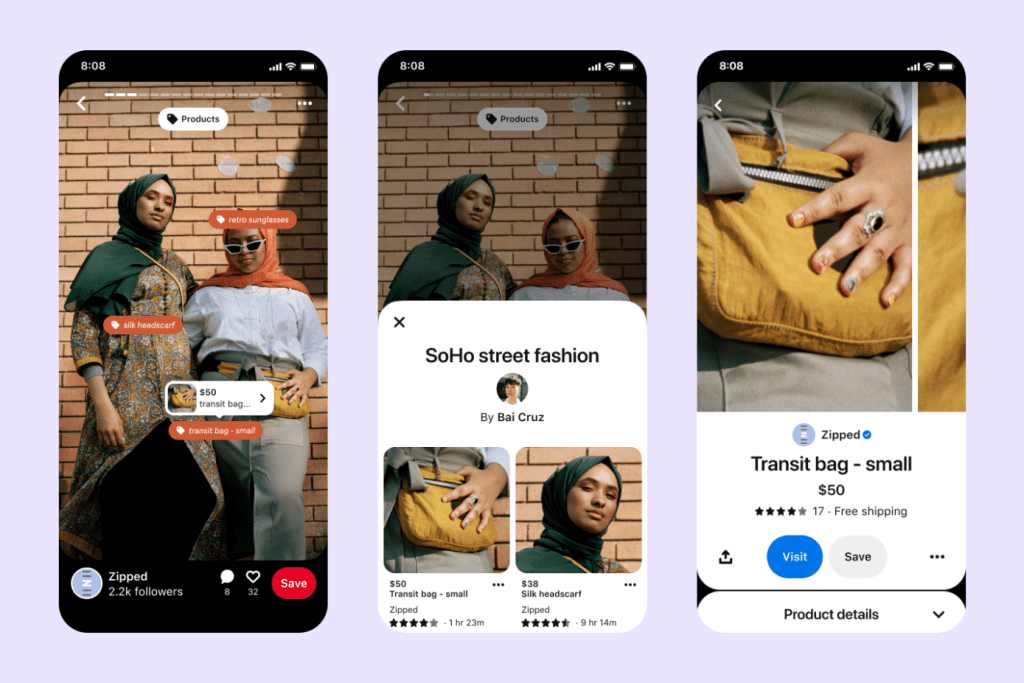
Warmer, More Receptive Customers
People let their defenses down when browsing enjoyable information. They are more open to new ideas and less critical in their thoughts.
Compared to people who are undertaking thorough, analytical Google searches for the appropriate products, these prospects are more likely to convert.
90% of users follow business accounts on Instagram alone. That’s a staggering number of people who allow corporations to offer them useful advice.
The correct content combined with a simple path to purchase can significantly increase conversion rates.
Access To More And More Data
Shoppable media is very effective at illuminating the buyer’s path.
You can determine which marketing material is generating sales by offering a clear path to purchase from that content. You may also check which goods are most in demand right away.
This enables you to test and improve your shoppable media campaign’s subsequent iteration.
If your content isn’t shoppable, customers won’t be providing that helpful information over the entire gap between them discovering your products and landing on your product page.
What are some examples of shoppable media?
The best examples of shoppable media are those that capture audiences at just the right time.
That might be while they are perusing expensive luxury items or making causal impulse purchases. Here are three companies who know themselves and have the imagination to make their shoppable content stand out.
Net-A-Porter
Net-A-Porter, a high-end women’s apparel retailer, has long been a master of shoppable content. Every product photograph in The Edit, their weekly digital magazine, is shoppable and has about 30 pages.
Porter, their bimonthly print magazine, is also available. You may instantly purchase any item from your physical issue of Porter by scanning it with their app. Net-A-strategy Porter’s should be thoroughly examined when it comes to fusing digital and physical media to provide users with seamless avenues to purchase.

Intermarché
Shoppable advertising is not just for expensive goods. One of the largest supermarkets in France, Intermarché, has used the concept for some of the most commonplace commodities.
This straightforward, succinct advertisement for canned peas and carrots includes a compelling call to action.
Because of how straightforward it is, this is a powerful illustration. It removes all barriers between the advertisement and the consumer, demonstrating that shoppable advertising can be made for any kind of goods.
Your only restriction is how well you understand the consumer. You can produce material that they’ll gladly act on if you know what they want to see.

BMW
On the other hand, if you have money to spend, the sky’s the limit. Although people are unlikely to purchase a BMW on a whim, shoppable information can be quite helpful for educating potential customers and dispelling common concerns.
People might learn more about particular features of the 4 Series coupé through an interactive film designed to market the car. Once their interest was piqued, they were routed to a landing page with more details.
We appreciate this illustration because it demonstrates how shoppable media can be a crucial component of product journeys even when consumers aren’t making impulsive purchases.
Over extended periods of time, it works just as well at developing rapport and trust.

How to get started with shoppable media for your business?
Brands may develop a solid shoppable media strategy in a number of ways.
Manage the customer experience
Brands should provide a variety of purchasing options at every touchpoint to prevent customers from wandering off in order to maintain control of the customer journey.
A brand can choose which shoppable experience to provide clients based on which one offers the most potential of conversion depending on where customers are in their purchasing journey.
Customers should be directed to their own product detail page by the brand if they frequently need further product information as well as information on price and availability before making a purchase (PDP).
A mobile-friendly landing page containing information on purchasing options may be appropriate when clients respond well to having a variety of options.
Brands should send their customers directly to the PDP or, for a truly frictionless experience, they can also send them directly to a cart with the product added if a product performs well as a spontaneous purchase.
Utilize tracking data
Brands can benefit from monitoring features on partner websites that can improve marketing attribution by taking control of the consumer experience in this way.
Brands should leverage the monitoring information provided by the partners they work with to sell their products to better understand consumer behavior so they can make improvements based on facts rather than conjecture.
To improve the consumer experience, they can use information about sales and cart performance. To further hyper-personalization, brands should include this data into their retargeting strategies.
Increase brand awareness
Multiple reliable purchasing choices can help brands stand out from the competition.
In order to create good client expectations, brands should strive to offer convenience at every point of contact.
To show the reliability of their brand, they should make sure to prominently feature all of their trustworthy retailer partners in their advertisements.
Include clear, simple paths to purchase wherever possible, and make sure to give stock and price information. In this manner, the consumer will probably remember the great experience even if the brand doesn’t make a sale during the initial interaction.
Consider creating a shoppable version of your own digital marketing content. Here are three crucial areas to pay attention to in order to maximize the effectiveness of this wise decision.
Focus on relevance and creativity
If the material isn’t interesting, making it shoppable is useless. In fact, because the aim is to elicit one particular response—to buy—shoppable media has a tougher time demonstrating its efficacy than the non-shoppable variety.
Media that cannot be purchased can get away with very simple measures like views, but conversions require effort.
Spend lots of time, energy, and money on producing content that makes your audience happy. Research and comments should be incorporated early in the process to give you a clear understanding of what will work.
After that, give yourself time to hone and adjust your concepts as you gather more evidence.
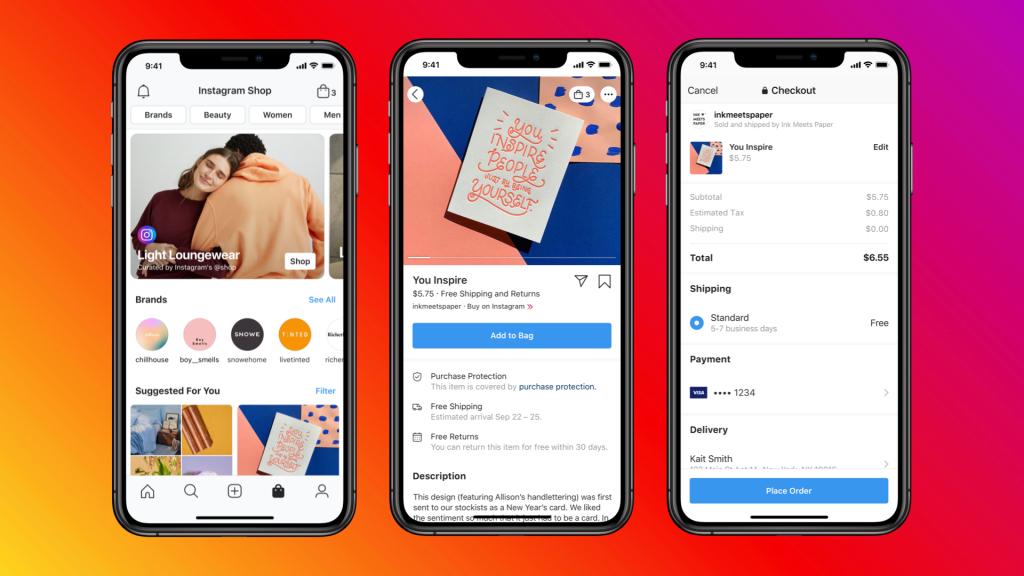
Let the tools do the hard work
More power to you if you decide to create your own shoppable media solution from scratch. However, it’s probably going to be a costly choice (to construct and maintain) with plenty of restrictions.
Kilowott’s solutions are simple to integrate into your website, enabling content to be purchased while also gathering crucial information that will help you understand your customers’ purchasing processes.
Your time should be spent creating material that will succeed. Utilizing tried-and-true solutions can free up more time for you to create the engaging experience that your audience is looking for.
Be ruthless with friction
Reducing the number of steps between seeing a product and buying it is the goal. But if your shoppable content has served its purpose…Is your website fulfilling its obligation?
Examine your content’s directionality with fresh eyes. Are the checkout procedure and product pages on your website as efficient as they can be?
Spending time on user journey optimization will help your content by lowering abandonment rates and encouraging repeat purchases.
Even while the opportunity is huge for big businesses, people and smaller companies can also profit from it. In a poll of social consumers, more than half (59%) stated they were more inclined to support small and medium-sized businesses by using social media to make purchases than by using e-commerce websites.
Furthermore, 63% of respondents indicated that they are more inclined to make a second purchase from the same supplier, demonstrating the advantages of social commerce in fostering customer loyalty and promoting repeat business.
Social commerce is a leveling force propelled by human intelligence, creativity, and power.
It gives smaller businesses and individuals more clout while forcing major corporations to rethink their place in a market with millions of consumers.
To successfully use social commerce, brands, resellers, and producers must go where the consumers are and will be, rather than the other way around.
It entails cooperating within a dynamic ecosystem of platforms, markets, social media, and influencers in order to share data, insights, and skills in order to give the greatest consumer experience and the appropriate incentives throughout an integrated digital economy.
However, according to the report, half of social media users are worried that social commerce purchases won’t be properly safeguarded or reimbursed, making trust the main obstacle to adoption, just as it was for eCommerce in the beginning.
Those who haven’t used social commerce claim that one reason is a lack of confidence in the legitimacy of social merchants, while active users of social commerce highlight the need for better return, refund, and exchange procedures.
The sellers who concentrate on these areas will be better positioned to increase market share because trust is a problem that will take time to resolve.
What are some shoppable media trends or shoppable content trends?
In 2025, clothes will make up 18% of all social commerce globally, followed by consumer electronics (13%), and home furnishings (7%), per an Accenture report.
Fresh food and snacks account for a substantial product category (13%) in the market even though sales are virtually completely to China.
The beauty and personal care industry is anticipated to quickly surpass eCommerce and account for more than 40% of this sector’s typical digital spending in significant places by 2025, although making up a smaller fraction of social commerce sales overall.
The likelihood and frequency with which customers in developing countries will engage in social commerce are among the study’s other conclusions.
In contrast to China, where eight out of ten social media users use it to make purchases in a specific category, the majority of social media users in the U.K. and the U.S. have not yet made a purchase through social commerce.
Customers in China, India, and Brazil care more about features that help them identify and evaluate potential purchases than consumers in the U.K. and the U.S. do.
Trust is valued more by older generations than by younger ones. Older customers prioritize security features and respect brand familiarity, whereas younger generations are lured to livestreams and give more weight to customer evaluations.
What’s the difference between social commerce and shoppable media?
Social commerce is the use of social media to promote products through the use of material like photographs, videos, and links to product pages.
It’s a common misconception that social platform markets like Instagram Shopping and Facebook Marketplace delineate the beginning and end of social commerce. Social trading is far broader than that.
Even behaviors that a business has no influence over, such as user-generated forums, reviews, blogs, and tweets, can be regarded as social commerce as long as they have an effect on consumers’ purchasing decisions.
It appears that the pandemic’s departure from the norm has resulted in impressive expansion. Retail social commerce sales in the United States will reach $36.09 billion in 2021, up 34.8%, per EMarketer.
In contrast, shoppable media is only one form of social commerce in which customers choose their preferred retailer and brands have an impact on the purchasing decision.
Marketers may use shoppable media in blog posts, landing pages, and even on actual product packaging in addition to social media.
Therefore, despite the fact that these two expressions seem to be the same, they are not. As contrast to social commerce as a whole, shoppable media is simply one aspect of the concept of social commerce.

What are the benefits of shoppable media?
Control the buying process
Most customers are picky about where they buy things. They have certain shops they prefer to shop at.
When customers see a product they like, they automatically go to the shops they are most accustomed to and at ease with.
Giving customers just one purchasing option interferes with their preferred buying process and makes them take extra steps.
They have to leave your website, go to Google or a retailer’s search engine, find and choose your product page instead of just clicking through to where they want to go.
That might not sound like much, but the more difficult it is for someone to purchase from you, the less you will sell.
So what if a customer’s chosen retailer doesn’t sell your goods? If you can provide customers with compelling options, they’ll be much more inclined to select a different retailer.
Even if someone has a strong preference for Amazon, they are aware of the quality of the shopping experience they may anticipate from a respectable store like Target or Kroger. In fact, it’s likely that they also shop there.
You have the ability to say, “These are all excellent possibilities,” thanks to shoppable media. When that happens, even if it’s not their all-time favorite retailer, your customers can choose the finest option available.
You maintain control over the path to buy because your clients don’t need to trawl the internet in search of other online shops that sell your products. And that stops you from encountering extra issues, such as dead ends.
Get rid of dead ends
A dead end occurs whenever a potential buyer leaves your website and cannot discover your product in their chosen stores.
You don’t want a customer who is prepared to make a purchase on your website to leave and visit Walmart.com. If your goods are absent, your customer might begin to consider what is offered at Walmart (and of course, Walmart will attempt to show them the best substitute). They may also give up.
The same applies if a store sells your goods but is currently out of stock. It leads nowhere. At this time, they cannot purchase your stuff there.
At this point, it is crucial for brands to employ shoppable media that shows current stock information rather than data from the previous week, day, or few hours.
The last thing you want is for a consumer to locate a nearby store, believe you when you say the item is available, and then get there only to discover that it’s sold out.
Sending visitors to a website that is out of stock, even if they are just attempting to make an online purchase, teaches them that they can’t rely on you to provide them with correct information, and that’s where their “road to purchase” will terminate before they make a purchase.
People are able to choose a path that seems comfortable for them thanks to shoppable media that contains reliable information about numerous purchasing possibilities. Additionally, they are far more likely to assume it is not an option and select another decision if their top store preference isn’t on the list.
Reduce competition
When consumers can’t find an easy way to make a purchase, they Google your product name or use a retailer’s search engine to find it. Each route might put them in contact with rivals.
Other companies employ display ads for the name and category of your goods, and both Google and significant retailers provide users a variety of options, so their search results will include more than just your product.
Where should I purchase this thing, your buyers should be asking themselves. not “What product should I purchase?”
By managing the buying process, you eliminate some of your rivals’ best chances to steal your customers.
Start creating shoppable media
The econometric modeling used to create Kilowott’s predictions for the social commerce market took into account consumer preference optimization to speed up the market’s current velocity. The social commerce market include both business-to-consumer (B2C) and consumer-to-consumer (C2C) transactions for goods or services purchased through social media platforms.
For almost 20 years, Kilowott has been honing store locator technology and developing it via innovation to make brands shoppable. Our technologies are used by close to 2,000 brands to increase conversions, manage the path to purchase, and understand the customer journey.
Kilowott is your greatest option if you want to increase the ease with which your consumers will gladly part with their cash for your goods by introducing them to trustworthy, stocked merchants.
We empower companies from across the retail and ecommerce sector, to offer everything from online webstores to tracking solutions that can bolster online selling of your products.
Need help? Let’s talk





